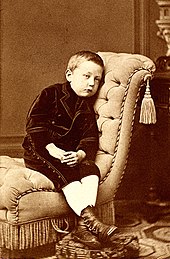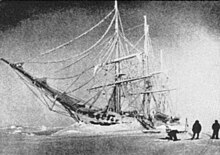Roald Amundsen
- Birth Date:
- 16.07.1872
- Death date:
- 18.06.1928
- Length of life:
- 55
- Days since birth:
- 55436
- Years since birth:
- 151
- Days since death:
- 35010
- Years since death:
- 95
- Person's maiden name:
- Roald Engelbregt Gravning Amundsen
- Extra names:
- Roald Amundsen, Roalds Amundsens, Роальд Амундсен, Roald Engelbregt Gravning Amundsen, Roaldas Amundsenas
- Categories:
- Freemason, Scientist, Voyageur
- Nationality:
- norwegian
- Cemetery:
- Set cemetery
Roald Engelbregt Gravning Amundsen ; 16 July 1872 – c. 18 June 1928) was a Norwegian explorer ofpolar regions. He led the Antarctic expedition (1910-12) to discover the South Pole in December 1911 and he was the first expedition leader to (undisputedly) reach the North Pole in 1926. He is also known as the first to traverse the Northwest Passage (1903–06). He disappeared in June 1928 while taking part in a rescue mission. Amundsen, Douglas Mawson, Robert Falcon Scott, and Ernest Shackletonwere key expedition leaders during the Heroic Age of Antarctic Exploration.
Early life

![]()
Roald Amundsen as a young boy in Christiania, 1875
Amundsen was born to a family of Norwegian shipowners and captains in Borge, between the townsFredrikstad and Sarpsborg. His father was Jens Amundsen. He was the fourth son in the family. His mother chose to keep him out of the maritime industry of the family and pressured him to become a doctor, a promise that Amundsen kept until his mother died when he was aged 21, whereupon he quit university for a life at sea. Amundsen had hidden a lifelong desire inspired by Fridtjof Nansen's crossing of Greenland in 1888 and the doomed Franklin expedition. As a result, he decided on a life of intense exploration.
Polar treks
Belgian Antarctic Expedition (1897–99)

![]()
Portraits of Roald Amundsen
He was a member of the Belgian Antarctic Expedition (1897–99) as first mate. This expedition, led by Adrien de Gerlache using the ship the Belgica, became the first expedition to winter in Antarctica. TheBelgica, whether by mistake or design, became locked in the sea ice at 70°30′S off Alexander Island, west of the Antarctic Peninsula. The crew then endured a winter for which the expedition was poorly prepared. By Amundsen's own estimation, the doctor for the expedition, American Frederick Cook, probably saved the crew from scurvy by hunting for animals and feeding the crew fresh meat, an important lesson for Amundsen's future expeditions.
Northwest Passage (1903–1906)

![]() Belgica frozen in the ice, 1898
Belgica frozen in the ice, 1898
In 1903, Amundsen led the first expedition to successfully traverse Canada's Northwest Passage between the Atlantic and Pacific Oceans. With him were six others in a 45-ton fishing vessel, Gjøa. His technique was to use a small ship and hug the coast. Amundsen had the ship outfitted with a small gasoline engine. They travelled via Baffin Bay, the Parry Channel and then south through Peel Sound, James Ross Strait, Simpson Strait and Rae Strait and spent two winters at King William Island in what is today Gjoa Haven, Nunavut, Canada. During this time Amundsen learned from the local Netsilik people about Arctic survival skills that would later prove useful. For example, he learned to usesled dogs and to wear animal skins in lieu of heavy, woolen parkas. Leaving Gjoa Haven he went west and passed Cambridge Bay which had been reached from the west by Richard Collinson in 1852.
Continuing to the south of Victoria Island, the ship cleared the Canadian Arctic Archipelago on 17 August 1905, but had to stop for the winter before going on to Nome on the Alaska District's Pacific coast. Five hundred miles (800 km) away, Eagle City, Alaska, had a telegraph station; Amundsen travelled there (and back) overland to wire a success message (collect) on 5 December 1905. Nome was reached in 1906. Because the water along the route was as shallow as 3 ft (0.91 m), a larger ship could not have made the voyage.
It was at this time that Amundsen received news that Norway had formally become independent of Sweden and had a new king. Amundsen sent the new King Haakon VII news that it "was a great achievement for Norway". He said he hoped to do more and signed it "Your loyal subject, Roald Amundsen." The crew returned to Oslo in November 1906, after almost 3.5 years aboard. It took until 1972 to get the Gjøa back to Norway. After a 45-day trip from San Francisco on a bulk carrier, the Gjøa was placed in her present resting place outside the Fram Museum in Oslo.
Disappearance and death

![]()
Amundsen monument in Ny-Ålesund,Svalbard, Norway
Amundsen disappeared on 18 June 1928 while flying on a rescue mission with Norwegian pilot Leif Dietrichson, French pilot René Guilbaud, and three more Frenchmen, looking for missing members of Nobile's crew, whose new airship Italia had crashed while returning from the North Pole. Afterwards, a wing-float and bottom gasoline tank from the French Latham 47 flying boat he was in, improvised into a replacement wing-float, was found near the Tromsø coast. It is believed that the plane crashed in fog in the Barents Sea, and that Amundsen was killed in the crash, or died shortly afterwards. His body was never found. The search for Amundsen was called off in September by the Norwegian Government.
In 2004 and in late August 2009 unsuccessful searches were made by the Royal Norwegian Navy for the wreckage of Amundsen's plane, using the unmanned submarine Hugin 1000. The searches focused on a 40-square-mile (100 km2) area of the sea floor, and were documented by the German production company ContextTV.
Legacy

![]()
A number of places have been named after him:
- The Amundsen–Scott South Pole Station is named jointly with his rival
- Amundsen Sea, off the coast of Antarctica
- Amundsen Glacier, in Antarctica
- Amundsen Bay, in Antarctica
- Mount Amundsen, in Antarctica
- Amundsen Gulf, in the Arctic Ocean, off the coast of the Northwest Territories in Canada (separating Banks Island and the western parts of Victoria Island from the mainland)
- A large crater covering the Moon's south pole is named Amundsen
- Amundsen Basin, abyssal plain in the Arctic Ocean.
- Amundsen Plain, abyssal plain in the Southern Ocean.
Several ships are named after him:
- The Canadian Coast Guard named an icebreaker CCGS Amundsen, whose mission is to perform scientific research in the waters of the Arctic
- The Royal Norwegian Navy is building a class of Aegis frigates, the second of which, is the HNoMS Roald Amundsen (completed 2006)
- The German brig Roald Amundsen
Other tributes include:
- Writer Roald Dahl was named after Amundsen
- Nobel Laureate, Chemist and Poet Roald Hoffmann was named after Amundsen
- The Amundsen Trail and Amundsen Circle, Oakwood, Staten Island, New York
- Amundsen High School, Chicago, Illinois
Works by Amundsen
- Nordvestpassagen, 2-vols, 1907. Translated as The North-West Passage: Being the Record of a Voyage of Exploration of the ship "Gjøa" 1903–1907, 1908.
- Sydpolen, 2-vols, 1912. Translated as The South Pole: An Account of the Norwegian Antarctic Expedition in the "Fram," 1910–1912, translated by A. G. Chater, 1912.
- Nordostpassagen. Maudfærden langs Asiens kyst 1918–1920. H. U. Sverdrups ophold blandt tsjuktsjerne. Godfred Hansens depotekspedition 1919–1920. Gyldendal, Kristiania 1921.
- Gjennem luften til 88° Nord (by Roald Amundsen, Lincoln Ellsworth and other members of the expedition, 1925). Translated as Our Polar Flight: The Amundsen-Ellsworth Polar Flight, 1925; also as My Polar Flight, 1925.
- Den første flukt over polhavet, with Lincoln Ellsworth and others, 1926. Translated as The First Flight Across the Polar Sea, 1927; also as The First Crossing of the Polar Sea, 1927.
- Mitt liv som polarforsker, 1927. Translated as My Life as an Explorer, 1927.
Bibliography
- Roald Amundsen's Belgica Diary. The first Scientific Expedition to the Antarctic by Hugo Decleir, Bluntisham Books, Erskine Press.
- The Last Place on Earth: Scott and Amundsen's Race to the South Pole by Roland Huntford, 1979.
- Roald Amundsen, a full biography by Tor Bomann-Larsen, 2006, ISBN 0-7509-4343-2
- Scott and Amundsen – Duel in the Ice by Rainer-K. Langner, Haus Publishing, London, 2007, ISBN 978-1-905791-08-8
Source: wikipedia.org
No places

No relations set



